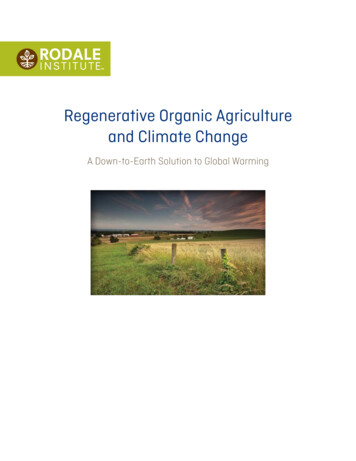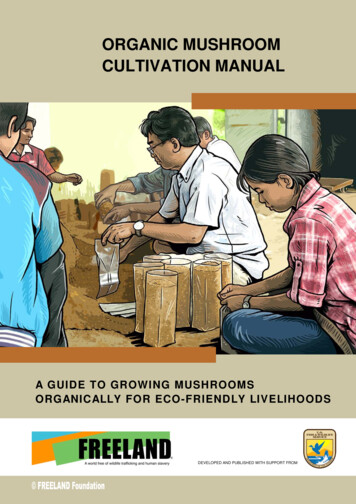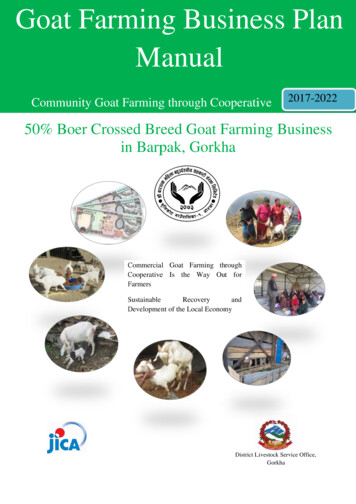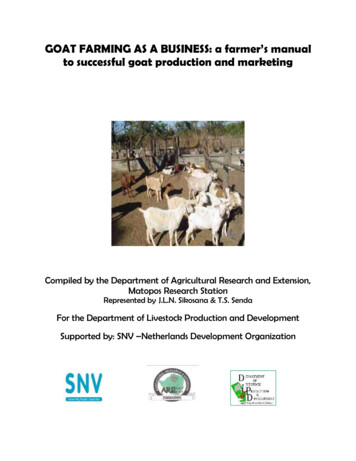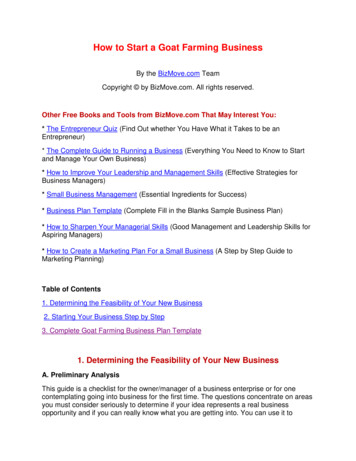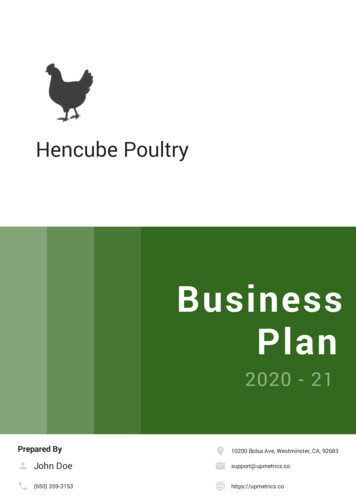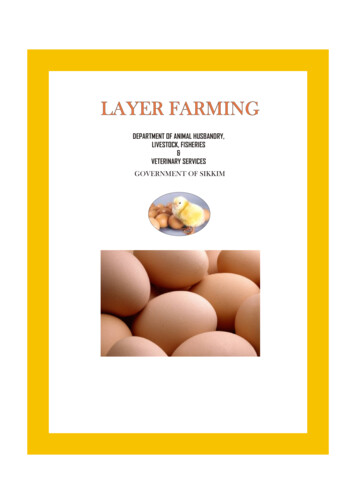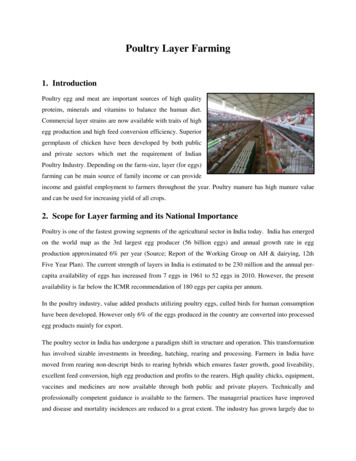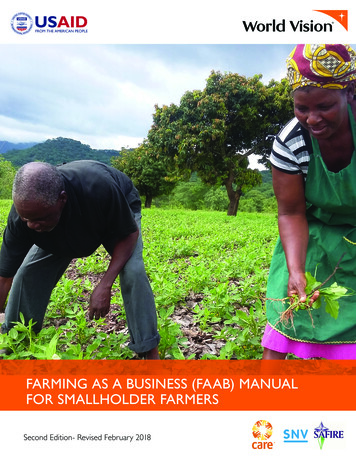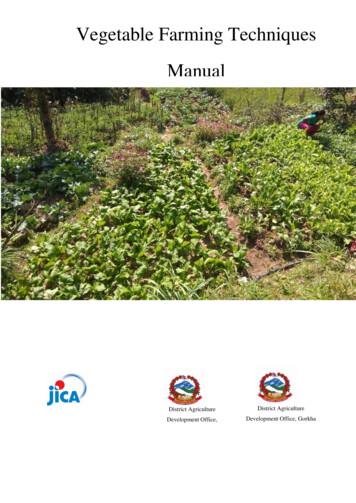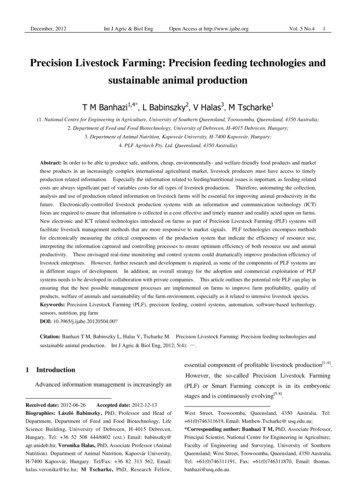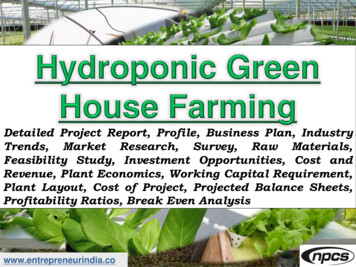
Transcription
SUSTAINABLEAGRICULTURE, ORGANICFARMING.Adithi MX standardVikasa High SchoolAlkola, Shimoga – 577 204
Introduction¾What is agriculture? It is science or art ofcultivating the soil, growing and harvesting cropsand raising live stocks¾Sustainable agriculture means farming systemthat are capable of maintaining their productivity& usefulness to society indefinitely. Such systemsmust be resource-conserving, socially supportive,commercially Competitive and environmentallysound.
¾ The main basic needs of human being is foodand shelter.¾ Modern package of technology, services andpublic policies have improved the productionof food crops and supply of food products hasincreased.
Agriculture including crop , horticulture,flouri-culture, animal husbandry, forestry andagro forestry, fisheries, agro industriesprovides livelihood to over 70% ofpopulation.Berozgari Hatao – eradicate unemployment isour call. A high percentage of new livelihoodopportunities have to come from agriculturaland agro industries sectors.
Types of agriculture
Intensive Agriculture Extensive Agriculture
Shifting agricultureSlash and burn agriculture
Till less AgricultureMixed farming
Plantation FarmingPoultry
Dairy farming Sericulture
Scope for agriculture in 5 yearplans Green revolution during the period 1967- 1977.Green revolution meant a phenomenal expansionof agriculture with emphasis on construction ofdams and irrigation canals and increased relianceon pesticides. In recent years, damage to the foundations ofagriculture namely land and water. Deforestation and atmospheric pollution in therace of modernization,.
key solutions-- revive traditionalmethods of farming.
Sustainable agriculture is a systemof crop cultivation which doesn’timpair the manurial or humuscontent of the soil and water Controlling soil – water regimes
Rain harvesting & irrigational methods
Soil Fertility managementOrganic residue management
Organic farming. Organic farming is a form of agriculture whichavoids or largely excludes the use of syntheticfertilizers and pesticides, plant growthregulations, and livestock feed additives.
History:Advances in Biochemistry,Engineering in the early 20th centuryResearch in plant breeding produced hybrid seedsSpecialized croppingEfficient use of machinery.Technological advances during world warLaunching the era of widespread pesticides use.
The British botanist, sir Albert Howard often called “thefather of modern organic agriculture” studied traditionalfarming practices in Bengal India.The first use of the term organic farming is usually credited toHard North Bourne,
In 1972, the International Federation of OrganicAgriculture Movement (IFOAM), was founded in France.pressing for government regulation of organicproduction. This led to legislation and certificationstandards being enacted beginning in the 1990s.
Methods Organic farming involves fostering naturalprocesses, often over extended periods oftime, and what advocates describe as aholestic approach. Enhancing soil health Repeated use of insecticides and herbicidesand other pesticides organisms.
Organic pest control Benefits–soil protection and improvement,fertilization,Pollination ,water conservation,etc., Weeds are controlled mechanically,thematically and through the use of mulches
Organic farming systems The Bio-dynamic farming is an approach,based on esoteric teachings of RudolfSteiner, The Japanese farmer and writerMasanobu Fukucka invested a no-tillsystem for small–scale grain production thathe called Natural farming. French intensive and Bio intensive methodsare both small scale gardening techniques.
Slash and burn agriculture Till less Agriculture Mixed farming Plantation Farming Poultry Dairy farming Sericulture. Scope for agriculture in 5 year plans Green revolution during the period 1967-1977. Green revolution meant a phenomenal expansion of agriculture with emphasis on construction of dams and irrigation canals and increased reliance on pesticides .
